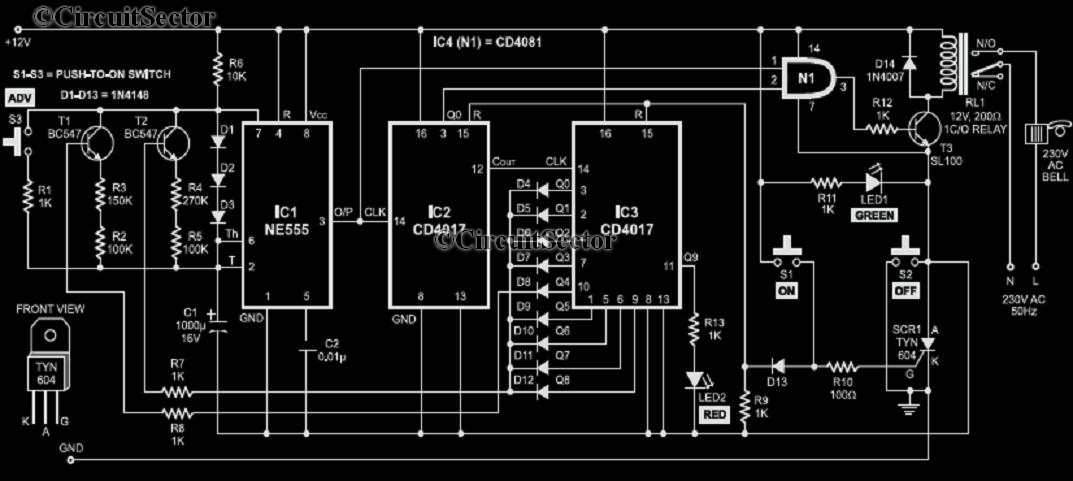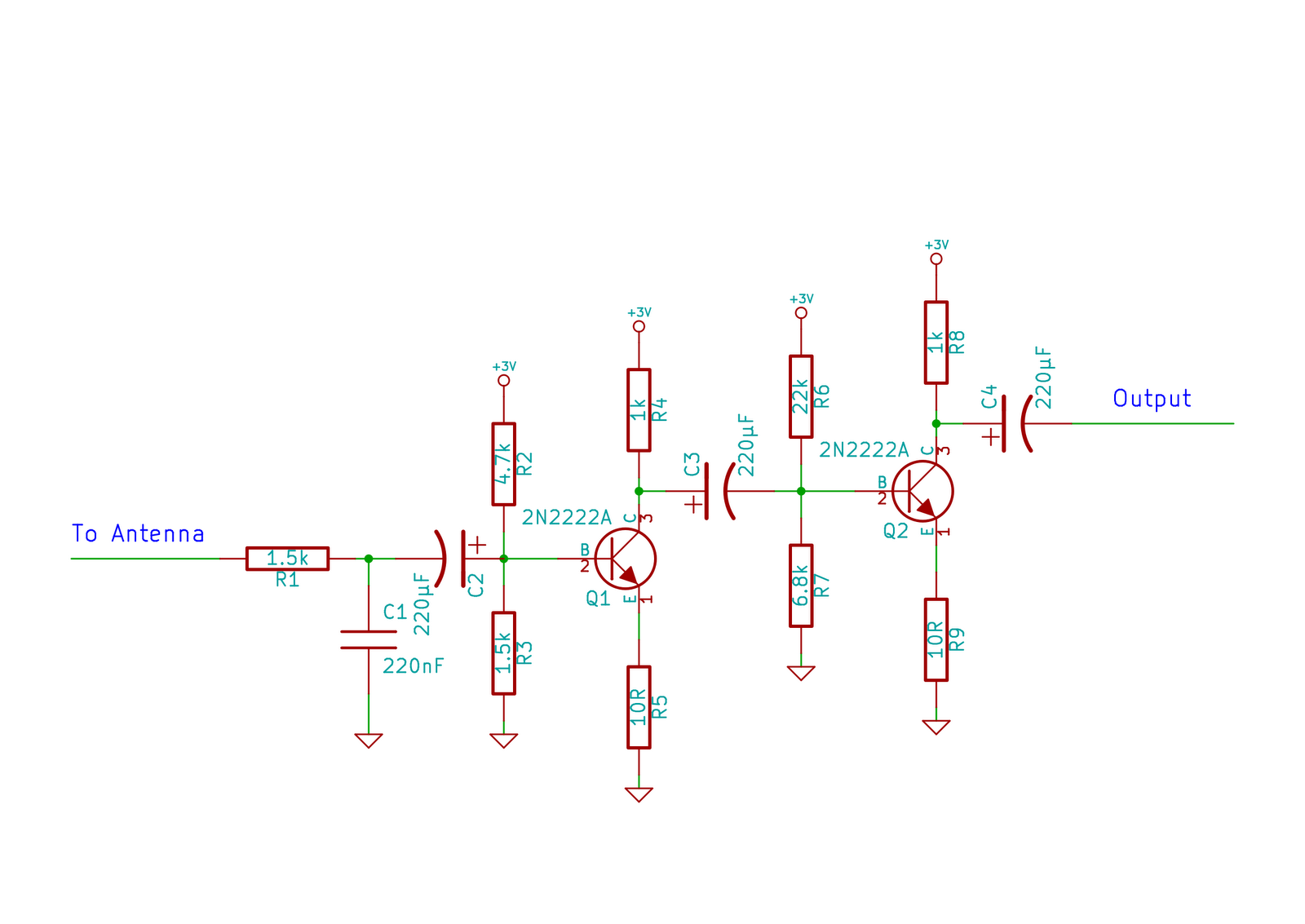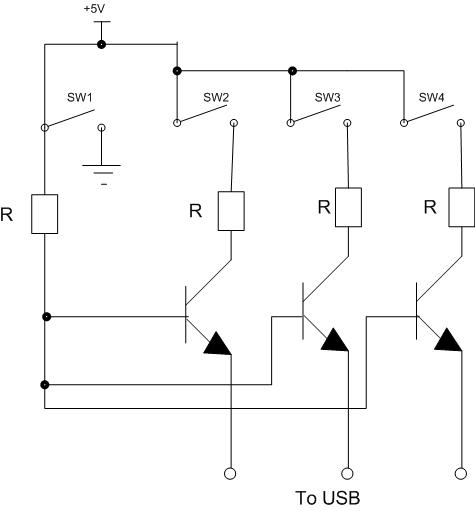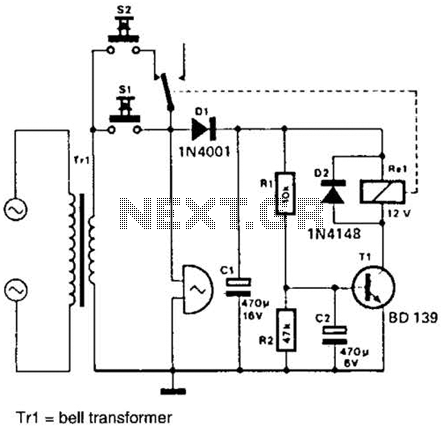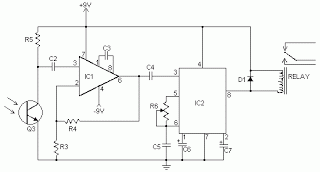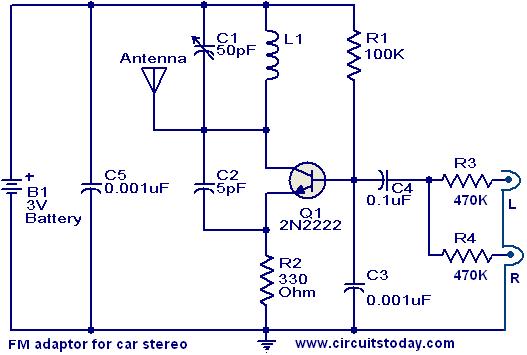
bass treble tone control circuit

The LM1036 is a DC-controlled circuit designed for managing tone (bass/treble), volume, and balance in stereo applications, such as car radios, televisions, and audio systems. It features an additional control input for easy loudness compensation. Four control inputs allow for the adjustment of bass, treble, balance, and volume functions through the application of DC voltages, which can be supplied by a remote control system or from four potentiometers that may be biased using a Zener-regulated supply provided within the circuit.
The LM1036 integrates several functionalities essential for audio signal processing in stereo systems. The circuit architecture includes dedicated inputs for bass and treble adjustments, enabling users to tailor the audio output to their preferences. The volume control feature is crucial for managing the overall sound level, while the balance control ensures equal sound distribution between the left and right channels, enhancing the listening experience.
The loudness compensation feature is particularly beneficial in scenarios where audio is played at lower volumes, allowing for a fuller sound by boosting lower frequencies, which are often less perceptible at reduced levels. This is achieved through an additional control input that can be easily integrated into the audio system.
For operation, the LM1036 requires DC voltages that can be sourced either from a remote control system or through potentiometers. The use of potentiometers allows for manual adjustments, providing flexibility in control. Zener diodes are utilized to maintain a stable voltage supply for the potentiometers, ensuring consistent performance and reliability of the circuit.
In summary, the LM1036 serves as a versatile and efficient solution for audio control in various stereo applications, combining ease of use with advanced features for optimal sound management. Its design facilitates straightforward integration into existing audio systems while providing the necessary controls for enhancing audio playback.The LM1036 is a DC controlled tone (bass/treble), volume and balance circuit for stereo applications in car radio, TV and audio systems. An additional control input allows loudness compensation to be simply effected. Four control inputs provide control of the bass, treble, balance and volume functions through application of DC voltages from a remote control system or, alternatively, from four potentiometers which may be biased from a zener regulated supply provided on the circuit..
🔗 External reference
The LM1036 integrates several functionalities essential for audio signal processing in stereo systems. The circuit architecture includes dedicated inputs for bass and treble adjustments, enabling users to tailor the audio output to their preferences. The volume control feature is crucial for managing the overall sound level, while the balance control ensures equal sound distribution between the left and right channels, enhancing the listening experience.
The loudness compensation feature is particularly beneficial in scenarios where audio is played at lower volumes, allowing for a fuller sound by boosting lower frequencies, which are often less perceptible at reduced levels. This is achieved through an additional control input that can be easily integrated into the audio system.
For operation, the LM1036 requires DC voltages that can be sourced either from a remote control system or through potentiometers. The use of potentiometers allows for manual adjustments, providing flexibility in control. Zener diodes are utilized to maintain a stable voltage supply for the potentiometers, ensuring consistent performance and reliability of the circuit.
In summary, the LM1036 serves as a versatile and efficient solution for audio control in various stereo applications, combining ease of use with advanced features for optimal sound management. Its design facilitates straightforward integration into existing audio systems while providing the necessary controls for enhancing audio playback.The LM1036 is a DC controlled tone (bass/treble), volume and balance circuit for stereo applications in car radio, TV and audio systems. An additional control input allows loudness compensation to be simply effected. Four control inputs provide control of the bass, treble, balance and volume functions through application of DC voltages from a remote control system or, alternatively, from four potentiometers which may be biased from a zener regulated supply provided on the circuit..
🔗 External reference
